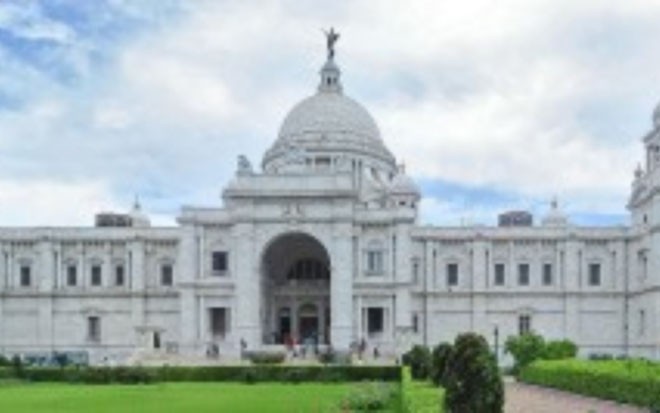
Colonial mediation in promoting Urdu

Mukhtar Masood in Harf-i-Shauq is trenchantly disposed towards Fort William College’s role in the development of Urdu language and literature. He considers all the translation work, carried out at the College, of very little value -- primarily because the classical literary narratives which were rendered into Urdu were far too surreal in their essence to be of any substantial use for the practical advancement of Urdu. Not being trained as a literary theorist, he does not delve deep enough to clearly see the ramifications of colonialism/orientalism on the knowledge produced by the ‘native’.
But I will deal with these points later. It seems pertinent to furnish the historical context in which Fort William College was conceived and then established. That was indeed an Orientalist project of great significance. I have relied for the information about Fort William College largely on Syed Waqar Azim’s book.
Fort William College was an academy and learning centre of Oriental Studies established by Lord Wellesley, then Governor-General of British India. The law to establish its foundation was passed on May 4, 1800, to commemorate the first anniversary of the victory over Tipu Sultan at Seringapatam in Mysore. It was founded within the Fort William complex in Calcutta. Thousands of books were translated from Sanskrit, Arabic, Persian, Bengali, Hindi, and Urdu into English at this institution.
Swapan Majumdar, known academic and expert in Comparative Literature at Jadavpur University writes in Calcutta, the Living City, "the College of Fort William emerged as both a centre of research and a publication unit, a cradle of creativity as well as scholarship. Planned originally to train probationer British civilians in the languages and cultures of the subjugated country, the college rendered services tantamount to those of a university in promoting modern Indian literatures, Bengali in particular… Under the leadership of William Carey, the College could also claim credit for drawing together Sanskrit pandits and Perso-Arabic munshis to reshape Bengali prose… The variety of the College’s publication also deserve note, from colloquies and popular stories, chronicles and legends, to definitive editions of literary texts."
As Majumdar states, "Fort William College aimed at training British officials in Indian languages and, in the process, fostered the development of languages such as Bengali and Urdu". In 1815, Ram Mohan Roy, a great Bengali reformer and founder of Brahmo Samaj resided in Calcutta. It is considered by many historians to be the starting point of the Bengali renaissance. Establishment of The Calcutta Madrassa in 1781, the Asiatic Society in 1784 and the Fort William College in 1800, completed the first phase of Kolkata’s emergence as Parnassus of intellect and erudition.
Read also: Words over-ride substance18
Ironically however, the court of directors of East India Company were never in favour of a training college in Calcutta, and for that reason the college faced problem for lack of funds. Subsequently, a separate college for the purpose, the East India Company College at Haileybury (England), was established in 1807. However, Fort William College continued to be a centre of learning languages. With the British settling down in the seat of power, their requirements changed. Lord William Bentinck announced his educational policy of public instruction in English in 1835, mostly to cater to the growing needs of administration and commerce. He clipped the wings of Fort William College, and the Dalhousie administration formally dissolved the institution in 1854.
John Gilchrist, an Indologist of great repute, was put in charge of the Urdu department. Given his contributions for the advancement of Urdu, some introduction of Gilchrist seems warranted here. John Borthwick Gilchrist (1759-1841) was a Scottish surgeon, linguist, philologist and Indologist. Born and educated in Edinburgh, he spent most of his early career in India, where he made a study of the local languages. In later life, he returned to Britain and lived in Edinburgh and London. He died in Paris at the age of 81.
Gilchrist’s contribution for the promotion of Urdu is well-known, which "led to it being adopted as the lingua franca of northern India (including present-day Pakistan) by British colonists and indigenous people". He compiled and authored An English-Hindustani Dictionary, A Grammar of the Hindoostanee Language, The Oriental Linguist, and many more. His lexicon of Hindustani was published in Arabic script, Nāgarī script, and in Roman transliteration.
Despite the scarcity of resources he managed to gather a galaxy of scholars like Mir Aman Delhvi, Haider Bakhsh Haideri, Mir Sher Ali Afsos, Mir Bahadur Ali Hussaini, Mirza Ali Lutf, Khalil Ali Khan Ashk, Nihal Chand Lahori and Beni Prashad Jahan. According to Prof. Waqar Azim, the compilation and translation work at Fort William College continued for 20 years. In the span of these 20 years, 50 to 60 books were produced. However, more significant were the works of literature, produced under Gilchrist’s supervision. His association with Fort William College as incharge of Urdu was four years long. Bagh-o-Bahar, Araish-i-Mahfil, Tota Kahani, Bagh-i-Urdu, Dastan-i-Amir Hamza and Gulshan-i-Hind were the most prominent works produced. Importantly enough, the first Urdu type and printing mechanism was installed at Fort William College.
After reading the history of that college, I failed to make sense of Mukhtar Masood’s contemptuous rejection of its role in Urdu’s advancement. He was dismissive of any utility or importance accorded to works like Bagh-o-Bahar and Dastan-i-Amir Hamza. Masood perches himself in the 21st century and judges these works from the angle of colonial rationality. He fails to appreciate the historical exigency of the early 19th century, which in fact helped Urdu prose through Fort William College to come out of the stage of infancy.
One must not discount the role of Colonial mediation in the promotion of Urdu and Hindi. Mukhtar Masood by rejecting the contribution of Fort William College tends to excise that very vital aspect in the evolution of Urdu.